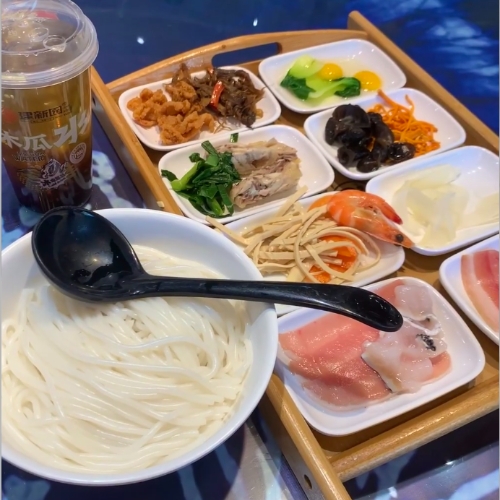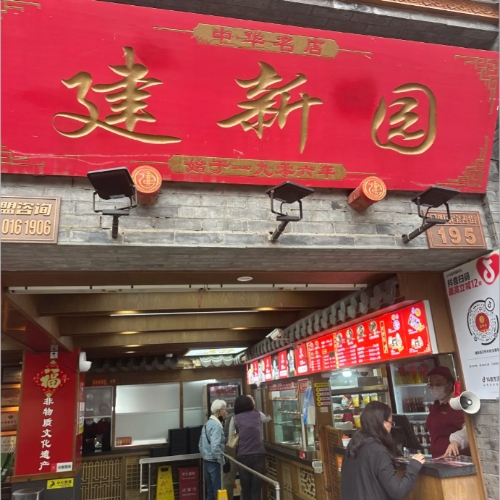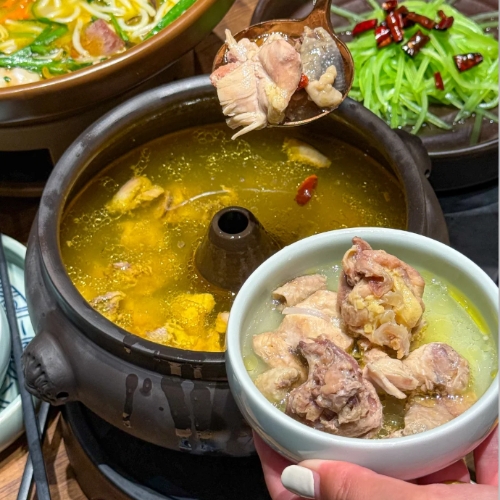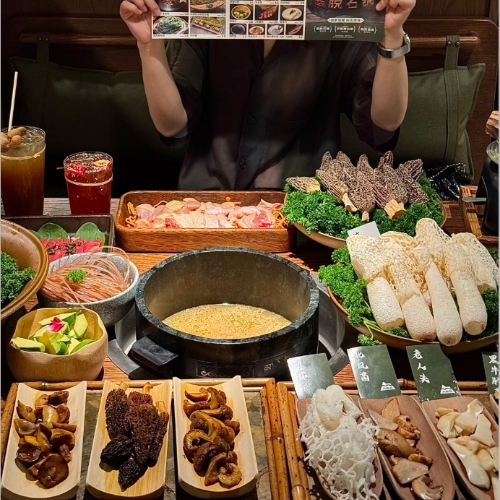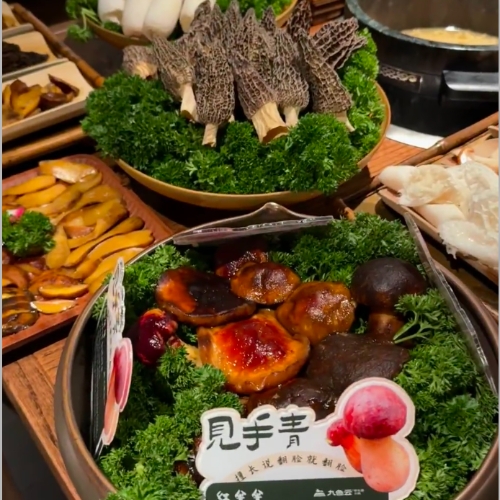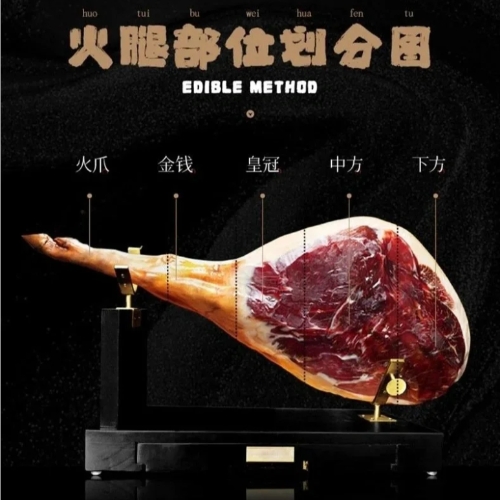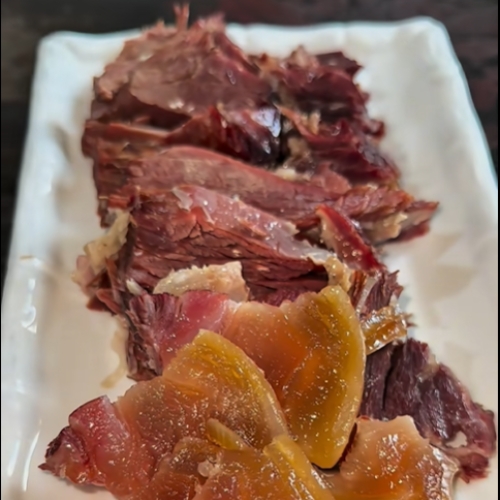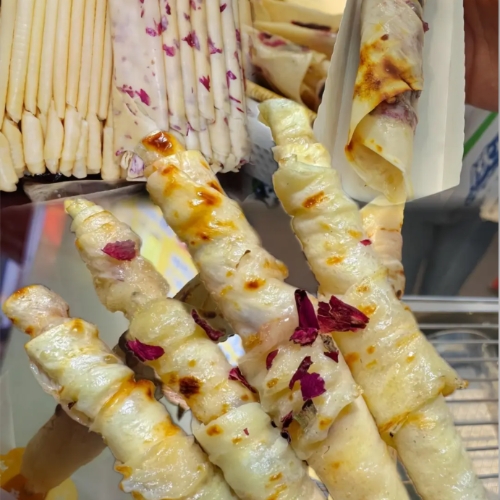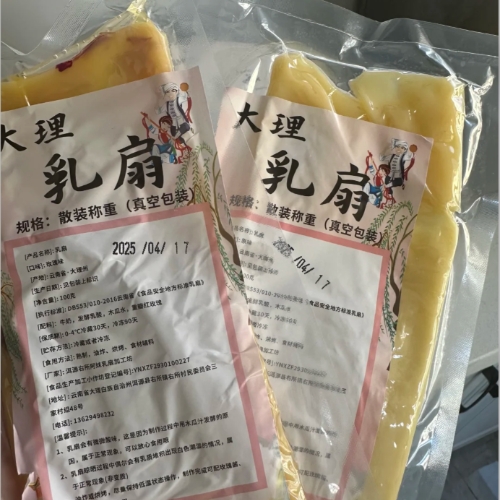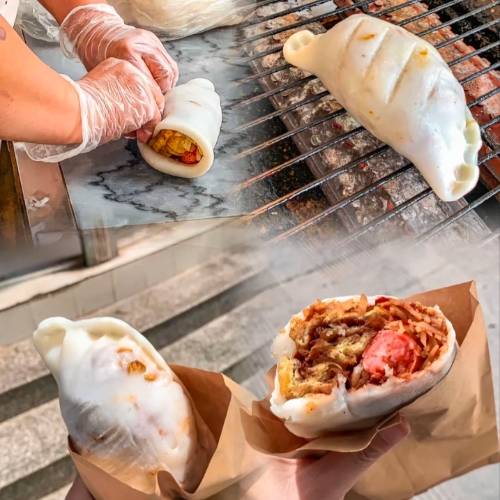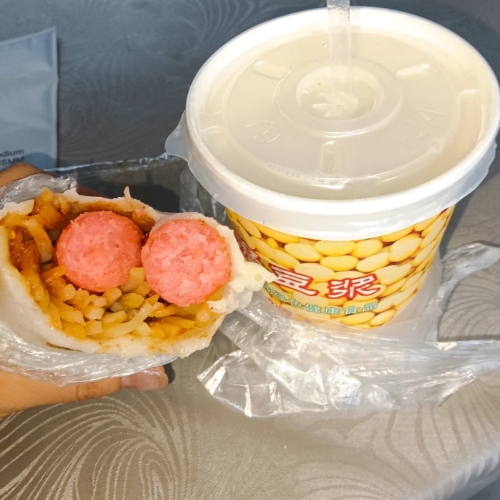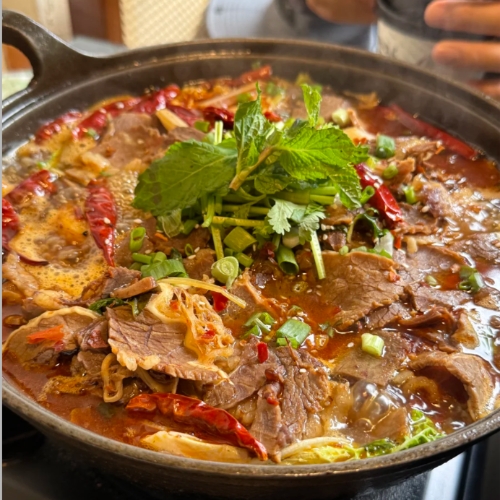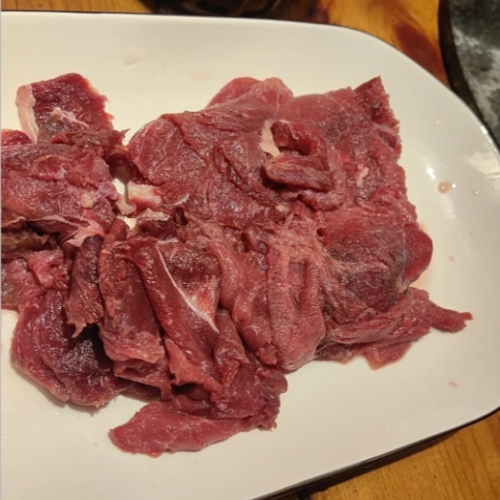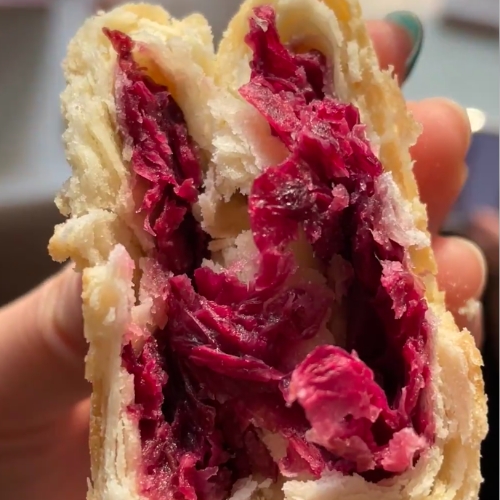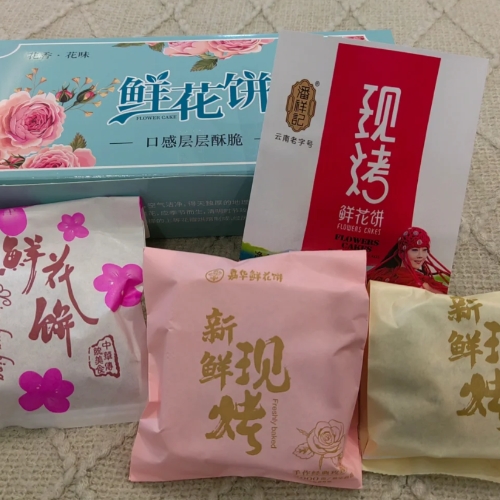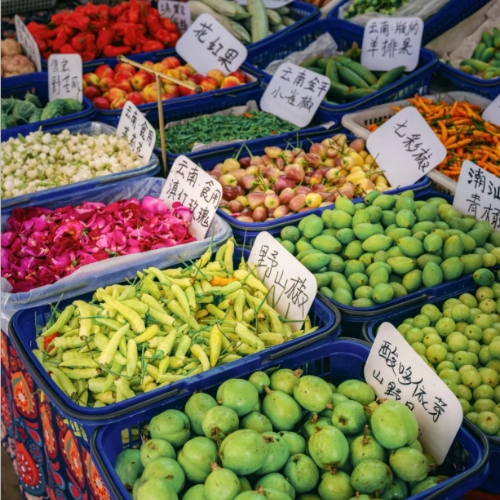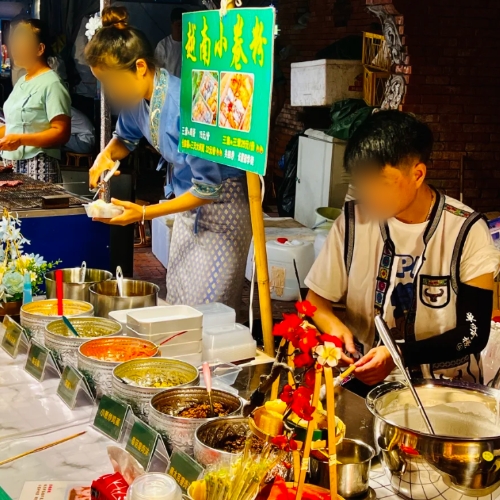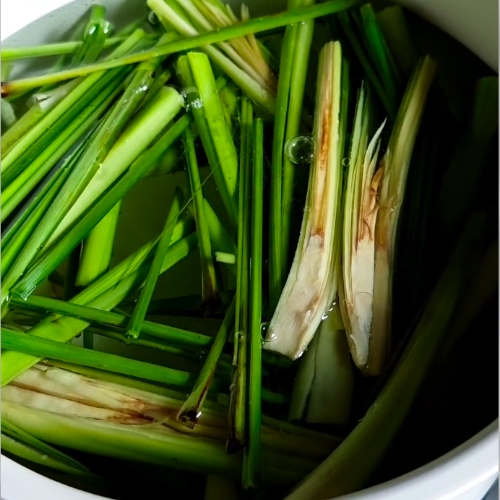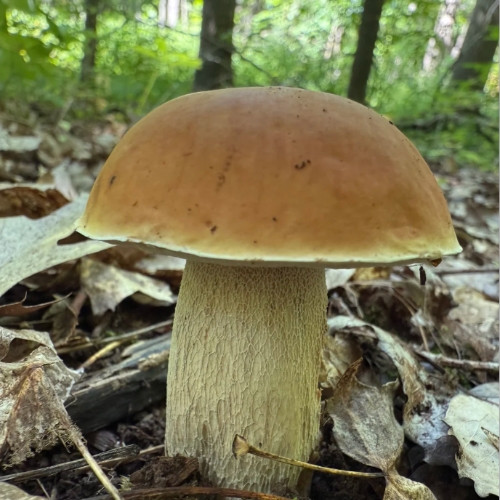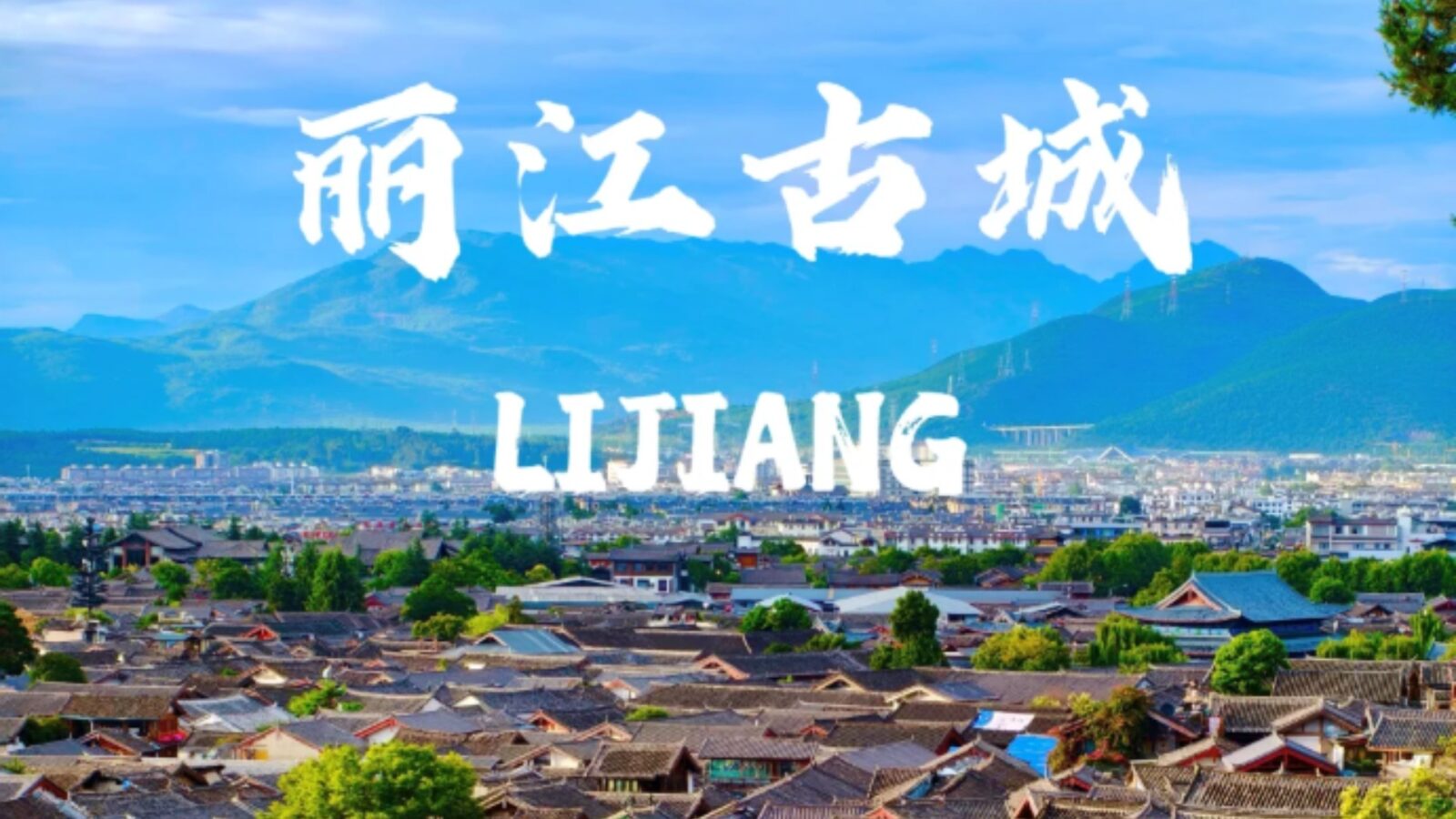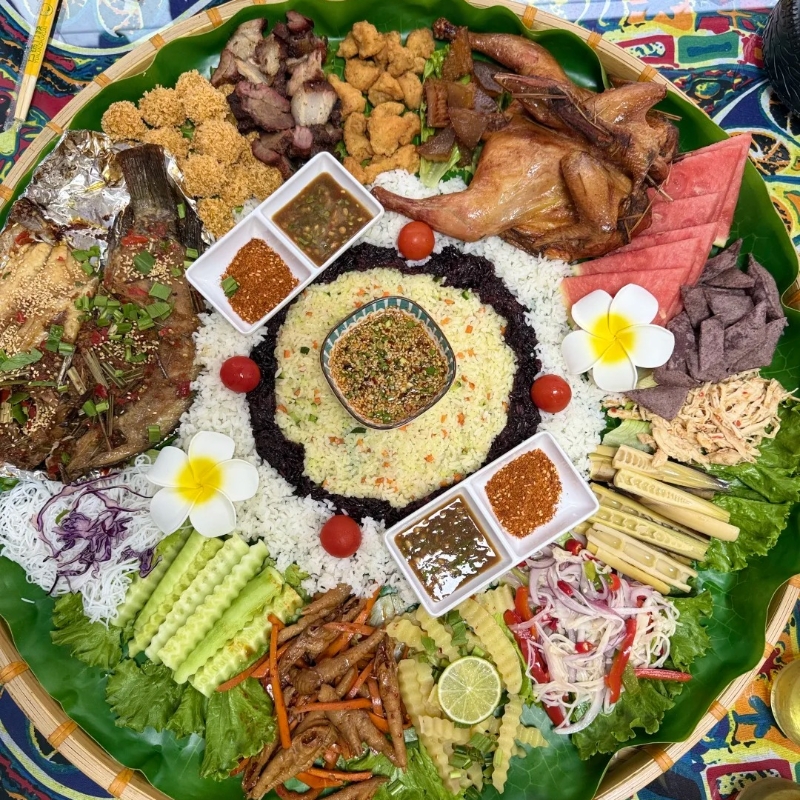
Yunnan Cuisine
I'll never forget my first bowl of crossing the bridge rice noodles in Kunming back in 2023. The waiter placed a steaming pot in front of me with thinly sliced raw meat on the side, and I had no idea what to do next. That confusion turned into one of the best meals of my life. Yunnan cuisine doesn't fit the typical Chinese food mold you know from takeout menus. This province has 25 ethnic minority groups, each bringing their own cooking methods and ingredients. You'll find wild mushroom varieties you've never seen, steam pot chicken cooked without adding water, and dairy products rarely found elsewhere in China. The food here blends influences from Southeast Asia, Tibet, and Sichuan into something completely unique.
This guide covers everything you need to eat your way through Yunnan Province in 2025. You'll get exact restaurant names with addresses, real price ranges I paid myself, and tips for ordering when English menus don't exist. Whether you have three days in Kunming or two weeks to explore Dali, Lijiang, and Shangri-La, this breakdown will help you find authentic yunnan food without wasting time on tourist traps. Let's get into what makes this corner of Chinese cuisine worth the flight.
Yunnan Cuisine (Dian Cuisine) Quick Info
| Category | Description |
|---|---|
| Core Positioning 📌 | Outside the eight major cuisines; blends multi-ethnic flavors with plateau ingredients |
| Key Ingredients 🍄🌸 | Wild mushrooms (Termitomyces, Matsutake), edible flowers, Xuanwei ham, small duck, sour bamboo shoots, lemongrass |
| Taste Characteristics 🌶️ | Base flavor is fresh; regional differences: South/Southwest (sour-spicy 🌶️🌶️), Northeast (spicy 🌶️🌶️🌶️), Central (salty-fresh-sweet 🌶️) |
| Cooking Techniques 🍳 | Han styles (steaming, frying) combined with ethnic methods (roasting, pounding); signature methods include clay steam pot and charcoal roasting |
| Cultural Attribute 👨👩👧👦 | Connected to 25 ethnic groups; features banquets like the Long Street Banquet and ethnic dishes such as pineapple glutinous rice |
| Representative Dishes 🍲 | Cross-bridge Rice Noodles, Steam Pot Chicken, Wild Mushroom Hot Pot, Yiliang Roast Duck, Sour Bamboo Shoot Boiled Fish |
10 Traditional Yunnan Food Dishes Every Traveler Must Try
These ten dishes represent the core of yunnan cuisine across different regions and ethnic groups. You can realistically try all of them in a week-long trip if you plan your route through Kunming, Dali, Lijiang, and one southern or northern destination. I've arranged them by how frequently you'll see them on menus, starting with the absolute essentials. Each entry includes where to find the best version, what you'll actually pay, and mistakes to avoid.
1. Crossing the Bridge Rice Noodles (过桥米线) - Yunnan's Iconic Dish
- Crossing the Bridge Rice Noodles
- Jianxin Yuan
The Crossing the Bridge Rice Noodles is Yunnan’s story in a bowl. Long ago, a clever wife carried soup and toppings separately to keep it hot—a trick still used today. Drop in meat, eggs, and noodles, watch them swirl, and taste that light, chicken-rich magic.
Locals swear by Jianxin Yuan in Kunming’s Wuhua District, where queues form before noon. Prices hover around 38–60 RMB, climbing to 120 RMB for the meaty deluxe bowl. If you want something quieter, Qiaoxiang Yuanmixian near Green Lake Park hits just right with bowls from 25 RMB and a cozier vibe. Ordering feels like part of the fun—say “中辣” for medium spice or “不要辣” if you can’t take the heat.
Sure, you’ll find these noodles everywhere, but Kunming’s broth carries a local magic you can’t bottle. Maybe it’s the mountain air, maybe it’s the slow pace—but one spoonful, and you’ll get why Yunnan people never rush their lunch.
2. Steam Pot Chicken (汽锅鸡) - Slow-Cooked Perfection
- Steam Pot Chicken
- Fu Zhao Lou
The first time you see a steam pot, you’ll likely pause. This clay pot hides a chimney inside, letting steam cook the chicken without any water added. The vapor rises, condenses, and turns into golden broth—pure essence, no tricks needed. The smell hits first: sanqi root, goji, red dates, maybe a bit of cordyceps. Locals swear it boosts energy and warms the body.
The chicken melts off the bone, and the soup tastes both light and rich. Add mushrooms or herbs if you want extra depth. Most spots charge 68 RMB for a standard pot, while matsutake or black-bone versions reach 180–250 RMB. Fu Zhao Lou (福照楼) offers a balanced one for 120 RMB, great for two. Just don’t sip too soon—the pot stays fiery hot for a while.
Craving something more than just Peking duck? Click Beijing Food Tour to uncover what Beijing cuisine is really about.
3. Wild Mushroom Hotpot (野生蘑菇火锅) - Yunnan's Seasonal Treasure
- Wild Mushroom Hotpot
- Wild Mushroom
From June to October, Kunming bursts with mushrooms—matsutake, porcini, chanterelles, and hundreds more. This short season gave birth to Yunnan’s iconic mushroom hotpot, a clear broth that highlights each flavor: meaty, nutty, even fruity at times.
Be careful, though—some wild mushrooms can cause hallucinations if undercooked. Locals joke about “dancing mushrooms,” but hospitals see real cases each year. Always eat at licensed spots like Mushroom Kingdom (菌王府), where prices run 80–120 RMB per person and safety certificates hang at the door.
The ritual’s simple: a steaming pot arrives, you cook each type by hand. Matsutake softens in seconds; wood ear mushrooms need longer. Dip in sesame oil and garlic, or just salt and lime. Go with friends to try more types—and skip any place selling “cheap matsutake.” It’s likely fake.
4. Xuanwei Ham (宣威火腿) - China's Top 3 Ham
- Xuanwei Ham
- Xuanwei Ham Dishes
Xuanwei, three hours from Kunming, is home to China’s best cured ham. Producers salt pork legs, hang them in airy rooms, and let altitude and weather do the magic. The flavor lands between jamón and prosciutto—deep, nutty, and perfectly marbled. Locals rank it with Jinhua and Iberico ham as among the world’s finest.
You’ll taste xuanwei ham across Yunnan dishes—tucked in noodles, steamed with veggies, or thinly sliced over buns. Its fat melts into everything it touches, adding a gentle savor. Less salty than American ham but bolder than Chinese sausage, it hits a sweet balance.
For a restaurant serving, expect 48–88 RMB, or 180–500 RMB/kg at Nanping Street Market. Look for the official seal and firm texture; over-salted or rubbery ones are fakes. A vendor once told me nearly 30% of tourist “xuanwei ham” isn’t real—proof that good taste’s worth checking twice.
5. Rushan (乳扇) - Yunnan's Unique Dairy Delight
- Rushan
- Dali Rushan
Most of China skips dairy, but the Bai people in Dali changed that centuries ago with rushan—Yunnan’s paper-thin milk cheese. Made from cow or goat milk curdled with vinegar, it’s stretched over bamboo frames and dried till it looks like a fan. Light, chewy, and slightly tangy, it keeps for weeks without spoiling.
Street vendors bring it to life again. They soften a sheet, deep-fry it golden, and roll it on a stick. Sweet ones get sugar or rose jam; savory ones get chili or bean paste. Think of it as mozzarella meets a crepe, crispy outside and creamy inside. You’ll find rushan all over Dali and Xizhou for 10–15 RMB a stick. Go early when the oil’s clean and the air smells buttery. It’s mild, sweet, and a bit tangy—some call it weird, but most can’t stop at one bite.
Ever wondered why Shanghai dishes taste both sweet and delicate? Check Guide to Shanghai Food and get the full flavor story.
6. Dai-Style Lemongrass Grilled Fish (香茅草烤鱼)
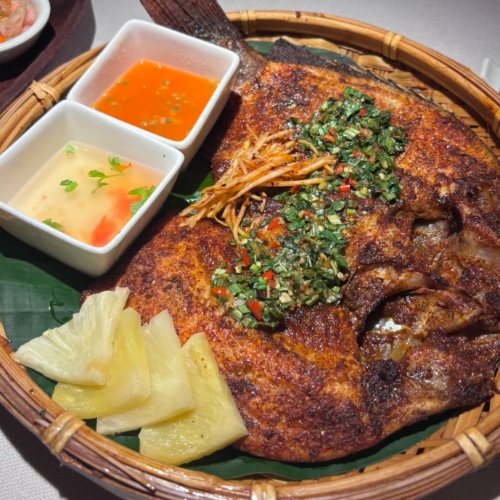
Dai-Style Lemongrass Grilled Fish
You’ll only find this dish in Xishuangbanna, Yunnan’s tropical south where Dai culture meets Thai and Lao flavors. Fresh tilapia or carp gets marinated in lemongrass, garlic, and chilies, sometimes with galangal or lime leaves. After an hour’s soak, it hits the charcoal grill.
The scent is unreal—smoky lemongrass and citrus drifting through the air. The skin crisps up while the inside stays tender and juicy. It’s bright, herby, and way lighter than typical soy-based Chinese fish. Every bite bursts with heat and sweetness from the fresh catch.
Try it at Gaozhuang Xishuangjing night market in Jinghong around 7 PM. One fish feeds two, priced 45–80 RMB. Say “一点点辣” if you can’t handle spice. Grab sticky rice and a cold beer—it’s the southern night vibe in one meal.
7. Erkuai (饵块) - The Versatile Rice Cake
- Erkuai
- Erkuai with Soy Milk
Erkuai is Yunnan’s take on rice cakes—like Korean tteokbokki but more flexible. The Bai and Yi people steam sticky rice, pound it smooth, and shape it into flat cakes or rolls. Once cooled, it’s ready for grilling, frying, or even soup.
The street version rules Kunming mornings. Vendors grill slices over charcoal, brushing on soy sauce, chili oil, and pickles. Sometimes there’s a fried egg or crepe wrap. It’s chewy, slightly smoky, and soaks up every drop of sauce—simple but addictive.
A grilled erkuai goes for 8–15 RMB in local markets, often paired with soy milk. In Guandu Ancient Town, vendors compete for crowds before 9 a.m. Stir-fried erkuai with ham and eggs costs 25–35 RMB, heartier and more savory. Near Erhai Lake, one old vendor swore the trick is pounding the rice exactly 300 times—too few and it’s grainy, too much and it’s gluey.
8. Yak Meat Dishes (牦牛肉) - High-Altitude Protein
- Yak Meat Hotpot
- Freash Yak Meat
In Shangri-La and northern Lijiang, yak meat takes center stage. These mountain grazers yield meat that’s gamier than beef and tougher too, thanks to their alpine workouts. Locals braise it for hours, slice it paper-thin for hotpot, or dry it into chewy jerky.
Yak hotpot steals the spotlight—thin slices cook in seconds and soak up rich spicy or mushroom broth. Dried yak jerky shows up as a snack or souvenir for 20–40 RMB, and stir-fried yak with peppers appears on nearly every menu.
Expect 48–88 RMB for stir-fried yak and 80–150 RMB for hotpot per person. Try Tibetan Hotpot Building (小桥流水藏式火锅樓) in Dukezong Ancient Town for the real deal. Real yak costs about 50–60 RMB/kg wholesale, so a huge portion under 30 likely means it’s mixed beef. Lower in fat, high in iron—yak meat fits the altitude life perfectly.
9. Naxi Blood Sausage (麻补) - Don't Judge by the Name
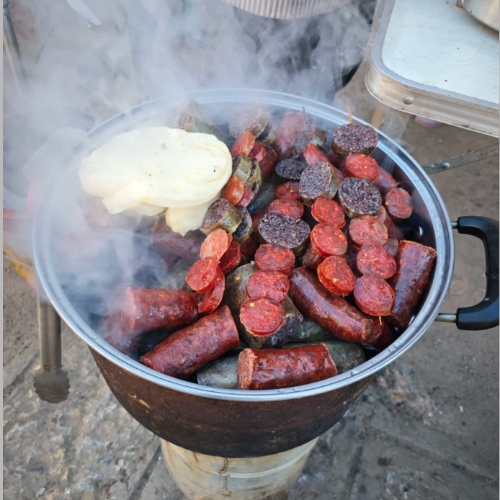
Naxi Blood Sausage
This Lijiang favorite looks bold but eats smooth. The Naxi people mix pig’s blood with rice, herbs, and spices, then stuff it into pork casings to steam or fry. Dark red, almost black, it’s firm yet tender, and the rice softens any metallic edge. The herbs—mint, cilantro, local greens—keep it bright.
Vendors slice it thick, either steamed (soft and mild) or fried (crispy, juicy). The flavor lands between Chinese lap cheong and Spanish morcilla but gentler. It’s earthy, savory, and far lighter than it looks.
Grab a plate at 88号小吃店 (88 Hao Xiaochi Dian) on Wu Yi Street for 15–25 RMB. You’ll also see it near Black Dragon Pool for 10–15 RMB, though quality varies. It’s dense yet balanced—fans of black pudding or boudin noir will feel right at home.
10. Flower Cakes (鲜花饼) - The Perfect Souvenir
- Flower Cakes
- Flower Cakes Types
You’ll spot these rose-filled pastries everywhere in Yunnan—bakeries, airports, train stations. The Bai people invented them centuries ago to preserve roses from Kunming and Dali valleys. Bakers blend petals with sugar, wrap them in flaky pastry, and bake till golden. When done right, they smell like fresh blooms, never perfume.
The magic’s in the texture. The crust flakes like a croissant but lighter, while the filling’s floral, chewy, and gently sweet. Cheap ones taste artificial with rose essence, but good bakeries use real petals and just enough sugar to let the flower shine.
Jiahua (嘉华) dominates airports at 3–6 RMB a piece, or 50–120 RMB per box. Pan Xiangji (潘祥记) costs a bit more (5–8 RMB) but uses better roses. Smaller Dali and Kunming bakeries sell fresh ones for 2–4 RMB—amazing but short-lived. Pair them with Pu’er tea for balance; earthy meets floral, simple perfection.
Yunnan Street Food: Where to Find Authentic Flavors
- Zhuanxin Farmers’ Market
- Gaozhuang Night Markets
- 88 Hao Xiaochi Dian
Zhuanxin Farmers’ Market — Everyday Life in Full Color
This is Kunming’s largest and most diverse market within the city’s first ring, bringing together specialties from 16 Yunnan prefectures and several provinces across China. The stalls burst with seasonal fruits and vegetables—many so unique you may not even know their names.
Who knew Yunnan had so many kinds of tomatoes and chilies? The best part: vendors here have a real sense of style, arranging their baskets beautifully so every photo looks Instagram-worthy. 10:00–12:00 — the perfect window to browse, snack, and enjoy a late breakfast or early lunch.
Gaozhuang Night Markets - Xishuangbanna's Dai Delights
Xishuangbanna’s Gaozhuang Starlight Night Market glows from 6 p.m. to midnight. Dozens of Dai stalls sizzle lemongrass fish, bamboo rice, and tropical shakes under warm lights. It’s clean, loud, and deliciously chaotic.
Grab freshly grilled lemongrass fish (45–80 RMB)—skip the reheated ones. Try bamboo rice (15–20 RMB) with coconut milk for a smoky touch. For something zesty, the lime chicken salad (25–35 RMB) hits right.
Turn left at the main gate for better food and fewer crowds. Budget 60–100 RMB per person and go early, around 6:30 p.m., before it’s packed.
Dali and Lijiang Street Food Strategy
Dali’s Foreigner Street (洋人街) looks lively but feels overpriced and watered down. Vendors speak English but charge extra, and the food’s milder than locals eat. For real flavor, head behind Dali Old Town’s South Gate (古城南门) around 5 p.m.—grilled rushan, noodles, and Bai snacks taste better and cost less.
In Lijiang, skip Sifang Square’s tourist traps and hit Wu Yi Street (五一街) after 6 p.m. for naxi blood sausage, grilled fish, and skewers. Prices run 15–35 RMB, with friendlier vendors and less pressure. Or taxi 15 minutes to Shuhe Ancient Town, where the same eats cost 30% less.
Try 88号小吃店 (88 Hao Xiaochi Dian) at 88 Wu Yi Street—rough décor, plastic stools, great food. Blood sausage, baba flatbread, and chicken bean jelly go for 12–20 RMB. No tourist markup, just honest Naxi flavors done right.
Yunnan Spices & Ingredients: What Makes It Unique
- Lemongrass
- Porcini
The Essential Yunnan Spice Cabinet
Walk into any Yunnan kitchen and you’ll see fresh chilies, caramelized garlic, and a strong aroma of local herbs. That sweet-savory garlic paste shows up in sauces, noodles, and almost every classic of Yunnan cuisine.
Lime juice, lemongrass, and wild ginger give Yunnan food its tropical edge. These ingredients, rooted in Dai traditions and Southeast Asian trade, make Yunnan cuisine bright and fragrant—far lighter than most Chinese cooking.
Dried mushroom powder adds umami depth, sprinkled over noodles or grilled meats. Sold in Kunming and Dali for 30–80 RMB, it’s a small jar of magic that captures the earthy heart of Yunnan cuisine.
Wild Mushrooms - Yunnan's Fungi Kingdom
Yunnan Province grows over 250 edible mushrooms, making it China’s fungi hub. You’ll find porcini, enoki, matsutake, wood ear, and many local types that define Yunnan cuisine. Matsutake’s nutty spice and porcini’s umami depth show how diverse Yunnan cuisine flavors can be.
Matsutake (松茸) is the star, costing 300–1000 RMB/kg from August to October. Its rarity and delicate forest habitat make it priceless in Yunnan cuisine. The best mushrooms are thick, fresh, and harvested within a day.
For souvenirs, dried mushrooms are ideal: porcini 80–200 RMB, matsutake 300–800 RMB. Buy from Kunming’s Muyang Street Market, avoid inflated tourist prices, and always compare quality before buying.
Practical Guide: Eating Like a Local in Yunnan
Essential Chinese Food Phrases with Pronunciation
Learning five key phrases will make dining in Yunnan easier. Ask, "这张桌子有人吗?" (zhè zhāng zhuōzi yǒu rén ma?) to check if a table’s free. Say "不要辣" (bú yào là) for no spice, "中辣" (zhōng là) for medium, and "很辣" (hěn là) if you love heat. When ready to pay, use "买单" (mǎi dān), and ask for an English menu with "有英文菜单吗?" (yǒu yīngwén càidān ma?).
Download a pronunciation guide or use Google Translate’s camera to read menus—quick, useful, and mostly accurate. Pointing and showing dish photos works fine in casual spots. Don’t worry about perfect tones; locals appreciate any effort to speak Chinese.
Payment Methods and Money Matters
WeChat Pay and Alipay dominate payments in China, though setup can be tricky for foreigners. Some now link foreign cards, but check requirements before arrival. Hotels often help with registration during check-in.
Keep 500–1000 RMB in cash for small vendors and markets—many don’t take digital pay. ATMs are common in cities, so withdraw as needed rather than carrying large sums. Losing your phone means losing access to WeChat Pay, so backup cash is vital.
Tipping isn’t common in Yunnan. Locals may think you forgot your change. Only upscale tourist spots appreciate small tips—round up 10–20 RMB for great service. Bargain only in markets, not restaurants; menu prices stay fixed.
Food Safety, Health, and Common Sense
Tap water in Yunnan isn’t safe unless boiled. Stick to bottled water (2–5 RMB) or hot tea. Ice is fine at proper restaurants but avoid it at street stalls—vendors usually buy ice, but you can’t be sure.
Skip raw salads at stalls since they’re often rinsed with tap water. Cooked dishes are safer: crossing-the-bridge noodles, steam pot chicken, and grilled foods stay bacteria-free. Heat above 70°C/160°F kills most germs.
Carry Imodium or similar meds for stomach upsets. Sudden spice or oil changes can hit hard. Major hospitals: Kunming’s Yunnan Provincial First People’s Hospital (云南省第一人民医院) has English-speaking doctors; Dali and Lijiang hospitals have basic support. Travel insurance (30–80 USD/2 weeks) with evacuation coverage adds peace of mind.
Avoiding Tourist Traps and Overpriced Meals
Tourist trap signs: English photo menus near main gates, touts calling to foreigners, and “special Yunnan set menus” priced double the real cost. Local spots stick to Chinese menus and honest prices.
Good food signs: local families lining up, plain decor, and Chinese-only menus. Walk two blocks from tourist squares—prices drop 30–50%. In Dali Old Town, South Gate noodles cost 40 RMB, but behind the gate, just 18–25 RMB.
Use Dianping (China’s Yelp) to find reliable spots. Sort by review count, not just stars. Real photos show dish size and quality. One Australian traveler used it across Yunnan and said she never had a bad meal.
Frequently Asked Questions About Yunnan Cuisine You Wanna Know
Q: What foods is Yunnan known for internationally?
Yunnan cuisine is best known for crossing-the-bridge rice noodles, steam pot chicken, and wild mushrooms. These signature dishes define the region’s food culture, though few outside China know about erkuai, rushan cheese, or xuanwei ham. Travelers exploring Yunnan cuisine discover authentic regional flavors untouched by Western influence.
Q: Can I find authentic Yunnan food outside of Yunnan?
Authentic Yunnan cuisine is rare abroad. Restaurants in Shanghai or Beijing offer partial authenticity, while places in London or Chicago struggle due to ingredient limits. True Yunnan cuisine relies on fresh wild mushrooms, ham, and herbs—best experienced in Kunming or Dali, not overseas.
Q: How much should foreigners budget daily for food in Yunnan?
Food in Yunnan is affordable for all budgets. Street meals cost 80–120 RMB daily; mid-range restaurants 150–300 RMB; luxury dining 500+ RMB. With 180 RMB, you can enjoy most Yunnan cuisine highlights, from erkuai and rice noodles to steam pot chicken and wild mushrooms.
Q: What time of year has the best food in Yunnan?
Summer to early autumn is peak season for Yunnan cuisine thanks to wild mushrooms. June–October markets overflow with matsutake, porcini, and chanterelles. In winter, hearty hotpots and yak meat dominate menus, while spring brings fresh greens and early mushrooms.
Q: Are there English menus at Yunnan restaurants?
Tourist restaurants in Kunming, Dali, or Lijiang often have English menus, though translations vary. For true Yunnan cuisine, local spots may lack English menus but serve better food. Use translation apps or food photos to order confidently.
Q: Is street food safe for foreigners in Yunnan?
Street food in Yunnan is generally safe if cooked fresh and served hot. Choose busy vendors, avoid raw foods, and trust your instincts. Yunnan cuisine’s grilled and stir-fried dishes are flavorful and safe for most travelers.
Q: Do vegetarians have options beyond temple food?
Vegetarians thrive in Yunnan thanks to its vegetable-rich cuisine. Mushroom dishes, tofu stir-fries, and erkuai rice cakes fit plant-based diets easily. When ordering, say “我吃素 (I’m vegetarian)” to ensure a meat-free Yunnan cuisine experience.
Q: What's the deal with hallucinogenic mushrooms in Yunnan?
Some wild mushrooms in Yunnan cause mild hallucinations if eaten raw or undercooked. Licensed restaurants cook them safely. Stick to trusted venues for wild mushroom dishes to enjoy Yunnan cuisine without worry.
